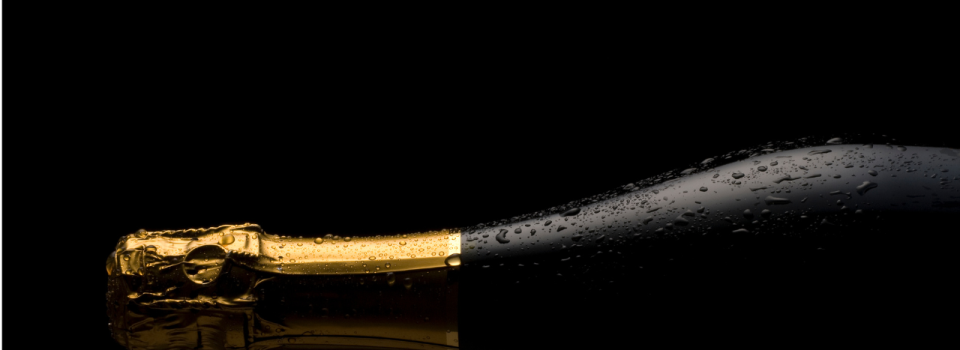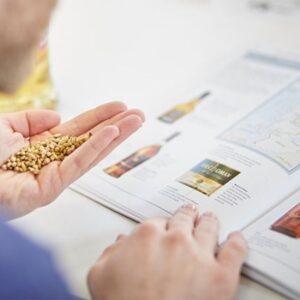Prosecco is much more than just a sparkling wine: it’s a true symbol of conviviality, freshness, and celebration.
Originating from Italy, the bubbles of Prosecco have spread worldwide, becoming a staple at festive moments and sunny aperitifs.
But behind its bubbles and lightness, Prosecco hides a fascinating history, a meticulous production process, and a wide variety of styles to explore.
In this article, we will dive into the world of Prosecco, exploring its history from its origins in Italy to its global popularity, the production method that makes it a unique sparkling wine, and the specific characteristics that differentiate it from other sparkling wines like Champagne. We’ll also discuss the different types of Prosecco, from the most accessible versions to premium cuvées, the best tasting tips to savor every nuance of this sparkling wine, food pairings with Prosecco to elevate your meals and cocktails, and classic and modern cocktail recipes made with Prosecco to add a festive touch to your evenings.
Whether you’re a wine enthusiast seeking new discoveries or a connoisseur looking for details on the production and tasting of Prosecco, this article is for you.
We also invite you to explore our WSET Wine courses, which will help you master the art of tasting and gain professional expertise in the world of wines.
Ready to explore the world of Prosecco?
Read on to discover more about this fascinating drink that makes every occasion sparkle.
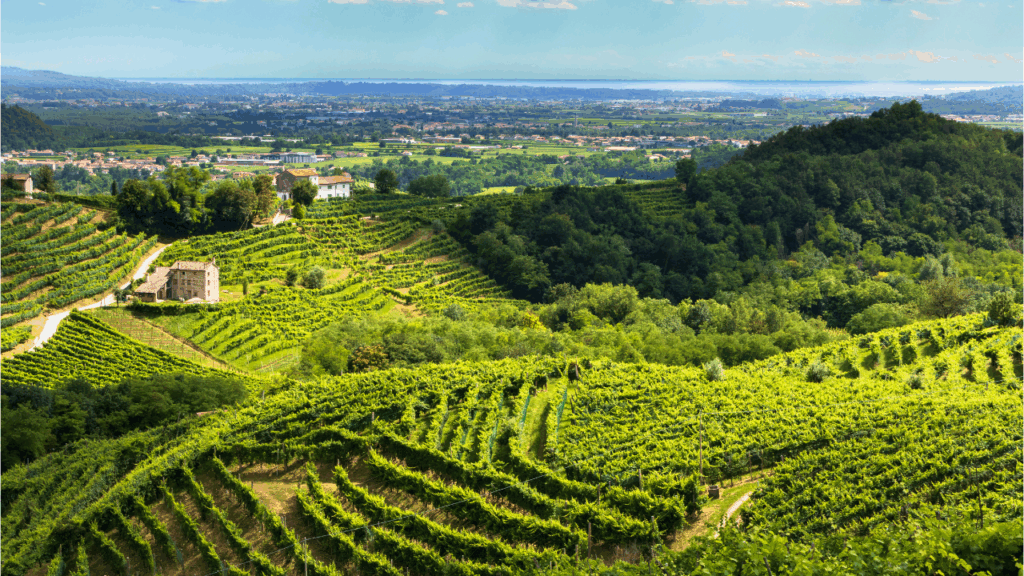
1. The History of Prosecco: From Italian Origins to Global Icon
Prosecco, a light and refreshing sparkling wine, is now one of the most consumed wines in the world.
Although Italy is the birthplace of this effervescent wine, its history dates back far before its current international popularity. Its journey to global recognition has been marked by centuries of evolution, tradition, and reinvention.
The Origins of Prosecco: An Italian Story
The earliest traces of Prosecco date back to the Roman Empire. It is said that the Romans already consumed a sparkling wine in the Veneto region, particularly in Conegliano and Valdobbiadene, two cities now famous for their Prosecco production.
However, it was during the 19th century that Prosecco took its current form, with improvements in winemaking techniques.
Over the centuries, the techniques for producing Prosecco have been refined, and it became an iconic wine of the Veneto hills, a region with an ideal climate for growing the Glera grape, the primary grape used to produce Prosecco.
Prosecco vs Champagne: The Battle of Bubbles
Although often compared to Champagne, Prosecco stands out in several important ways, notably its production method.
While Champagne is made using the traditional method (bottle fermentation), Prosecco uses the Charmat method (or Italian method), where secondary fermentation occurs in pressurized tanks. This gives Prosecco a lighter texture and fresher, fruitier aromas.
Prosecco has thus carved out a unique place in the world of sparkling wines, offering an affordable yet high-quality alternative to Champagne, while still remaining rooted in Italian tradition.
Prosecco’s Role in Italian Culture
In Italy, Prosecco is not just a drink; it is a true symbol of conviviality. Particularly in regions like Veneto and Friuli Venezia Giulia, Prosecco is present at major events and family gatherings. It is often enjoyed as an aperitif, accompanied by cicchetti (Venetian tapas) or pasta.
The culture of Prosecco goes beyond the purely gustatory aspect; it is a drink that evokes sharing, simplicity, and the Italian way of life.
The Rise of Prosecco Worldwide
Throughout the 20th century, the popularity of Prosecco grew significantly, largely due to its quicker and more cost-effective cuve close method, allowing for mass production.
After World War II, Prosecco quickly expanded, notably to North America.
Today, Prosecco DOC (Denominazione di Origine Controllata) protects the origin of Prosecco, ensuring that only wine produced in specific regions of northeastern Italy can bear the name.
Prosecco Superiore DOCG is the designation for Prosecco produced in the most prestigious areas of the region, such as Conegliano and Valdobbiadene.
Prosecco: A Global Phenomenon
Prosecco is now a global phenomenon, consumed all over the world, from Europe to the United States, and across Asia.
This wine has become a staple in bars, restaurants, and global events. Thanks to its fresh and fruity taste, it has established itself as the sparkling wine of choice for cocktail lovers.
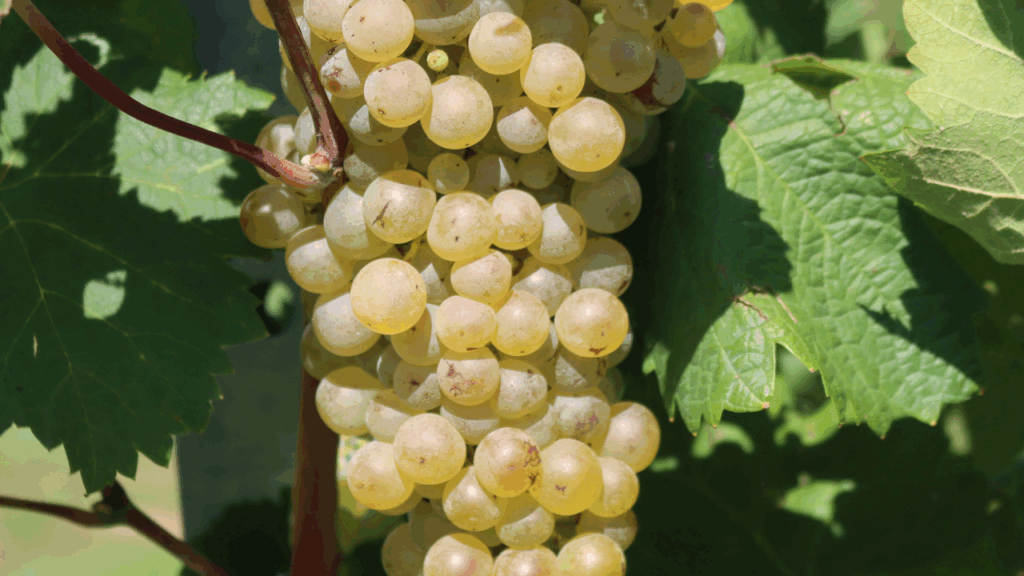
2. How is Prosecco Made?
The production of Prosecco relies on a precise and rigorous process that transforms simple raw materials into a sparkling wine that is pure, fruity, and refreshing.
Behind its apparent simplicity, each step of production plays a crucial role in creating a high-quality Prosecco.
The Grapes Used for Prosecco:
The Glera grape is the primary grape used to produce Prosecco.
Historically known as Prosecco (hence its name), this grape is now predominantly cultivated in the Veneto and Friuli Venezia Giulia regions of Italy.
Other grapes like Verdiso, Pinot Grigio, and Pinot Noir can also be used in certain Prosecco wines, particularly those labeled Prosecco Rosé (a sparkling rosé wine produced with a proportion of Pinot Noir).
Key Steps in Prosecco Production:
The production of Prosecco follows a specific process, commonly known as the Charmat method (or Italian method, or tank method), which differs from the traditional method used for Champagne.
This method involves secondary fermentation in pressurized tanks, allowing the wine to maintain its fresh and fruity characteristics.
- Harvesting the Grapes:
The production of Prosecco begins with the harvesting of the grapes.
The grapes are usually hand-picked to preserve the quality and integrity of the berries. The grapes need to be ripe but not overly so, ensuring a good balance between acidity and sweetness.
- Pressing and Primary Fermentation:
The grapes are then pressed to extract the juice.
This juice undergoes fermentation in tanks to produce a base wine. The fermentation process is done at controlled temperatures to prevent the loss of aromas.
The resulting base wine is usually dry, as a full fermentation of the sugars is desired before starting secondary fermentation.
- Secondary Fermentation (Charmat Method):
The Charmat method is the step that sets Prosecco apart from other sparkling wines.
After primary fermentation, the base wine is placed in a tank with yeast and a small amount of sugar to initiate secondary fermentation. This process, which can last between 1 and 3 months, is responsible for the formation of the characteristic bubbles in Prosecco.
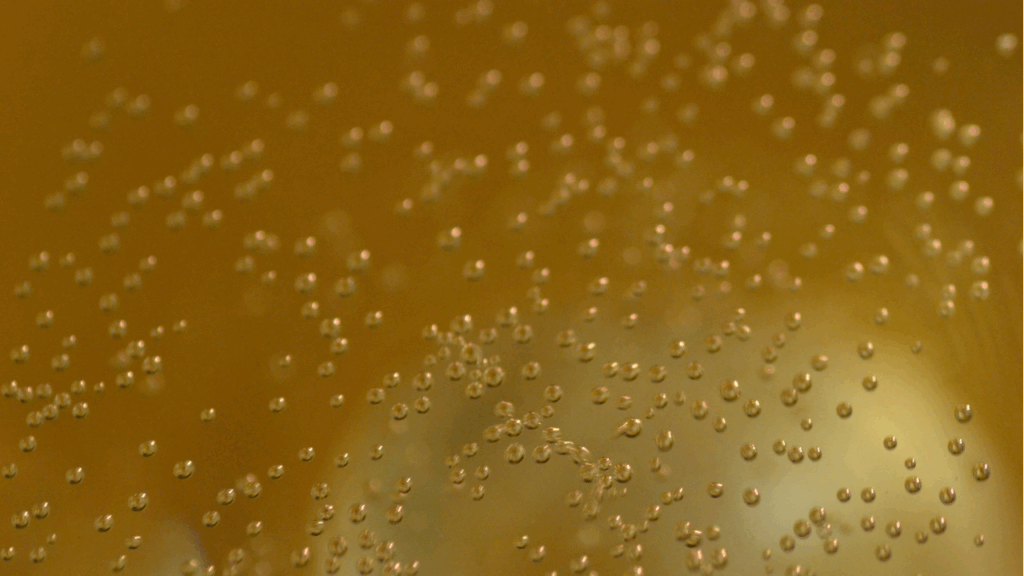
- Filtration and Clarification:
Once the secondary fermentation is complete, the wine is filtered to remove dead yeast and other impurities.
This step is crucial to ensuring the purity and clarity of the Prosecco, as well as its smoothness on the palate.
- Bottling:
After filtration, the Prosecco is bottled under pressure, typically in bottles sealed with a mechanical closure (aluminum capsule) or a plastic cork. Some producers allow the wine to rest a bit longer after bottling, but generally, Prosecco is consumed young to preserve its freshness.
Prosecco Rosé: A New Trend
Since 2020, Prosecco Rosé has been officially recognized and can now be produced in Italy under the Prosecco DOCappellation.
This sparkling rosé wine is made by adding a proportion of Pinot Noir to the blend of traditional grapes.
Prosecco Rosé follows the same process as white Prosecco, but with a specific fermentation to give it its pink color and more fruity aromas.
Prosecco Rosé must contain at least 85% Glera and up to 15% Pinot Noir.
This wine is distinguished by its red fruit aromas like cherry and strawberry, while maintaining the lightness and freshness of Prosecco.
Differentiation Between Prosecco Brut, Extra Dry, and Dry:
Prosecco is available in different sweetness and dryness variants, and the amount of residual sugar plays a key role in the final taste:
- Prosecco Brut: Less than 12 g/l of residual sugar, ideal for those who prefer dry wines.
- Prosecco Extra Dry: Between 12 and 17 g/l of sugar, offering a balance between sweetness and freshness.
- Prosecco Dry: Between 17 and 32 g/l of sugar, sweeter and fruitier.
3. Different Types of Prosecco: Discover the Varieties
Prosecco is an incredibly versatile sparkling wine, with a range of types and styles from the dry and brut versions to sweeter and fruitier ones.
Although it is primarily made from the Glera grape, the variety of available cuvées allows everyone to find a Prosecco that suits their preferences.
1. Prosecco DOC: The Classic Sparkling Wine
Prosecco DOC (Denominazione di Origine Controllata) is the most common and accessible version of Prosecco.
Produced mainly in the Veneto and Friuli Venezia Giulia regions, this version represents the majority of Proseccos sold worldwide.
- Prosecco Brut: Prosecco Brut is dry, with less than 12 g/l of residual sugar. It is a popular choice for sparkling wine lovers who prefer dry wines, ideal for cocktails or sipping alone.
- Prosecco Extra Dry: Though its name may be confusing, Extra Dry contains a bit more sugar (12 to 17 g/l), offering a slightly sweeter and fruitier taste.
- Prosecco Dry: With a sugar content of 17 to 32 g/l, Prosecco Dry is sweeter and often features flavors of ripe fruits and flowers.
2. Prosecco Superiore DOCG: The Excellence of Prosecco
Prosecco Superiore DOCG is the premium version of Prosecco, produced in smaller, specific areas, mainly in the hills of Conegliano and Valdobbiadene.
These regions, protected by the Denominazione di Origine Controllata e Garantita (DOCG) appellation, produce wines of exceptional quality, often more complex and refined than Prosecco DOC.
- Prosecco Superiore Brut: This Prosecco is particularly dry and offers more intense fruit and floral aromas. It is generally more structured, with a well-balanced acidity.
- Prosecco Superiore Extra Dry: Extra Dry is highly popular among connoisseurs and is often considered one of the best styles of Prosecco, with aromas of apple, pear, and citrus.
- Prosecco Superiore Dry: The sweeter version of Prosecco Superiore, which presents notes of ripe fruits and a pleasant floral aroma.
3. Prosecco Rosé: A Fruity and Colorful Touch
Prosecco Rosé is a relatively recent novelty, officially recognized in 2020.
This sparkling rosé wine is a variant of Prosecco, made by adding a small amount of Pinot Noir to the base wine, giving it a pale pink color and a fruitier flavor.
- Prosecco Rosé DOC: Prosecco Rosé DOC must contain at least 85% Glera and up to 15% Pinot Noir. This wine is fruitier, with aromas of strawberry, cherry, and grapefruit, perfect for a summer aperitif or paired with light dishes like salads or seafood.
- Prosecco Rosé Superiore DOCG: This premium version of Prosecco Rosé is produced in the Conegliano-Valdobbiadene region and offers even more refined aromas and increased finesse.
4. Variations Based on Grapes and Regions
Although Glera is the main grape, there are other Prosecco variations that play with the region or the grape varieties.
For example, some producers add grapes like Pinot Grigio, Verdiso, or Pinot Noir to add complexity to the wine.
Producers who focus on small plots of land, often on steep slopes and benefiting from a particular microclimate, produce very high-quality Proseccos. These wines can showcase unique characteristics, reflecting the specific terroir of a region.
5. Prosecco Bio: A More Natural Choice
Organic Prosecco is produced using sustainable methods, without the use of chemicals or pesticides. The grapes are grown according to organic farming principles, offering a purer taste that is more environmentally friendly.
Organic wines can feature greater aromatic complexity due to natural agricultural practices that promote a better balance between flavors and aromas.
- Prosecco Bio DOC: Made from organically grown grapes, it stands out for its more natural and authentic qualities.
- Prosecco Bio Superiore DOCG: The premium version of organic Prosecco, produced in specific regions of Veneto and Friuli, with particular attention to sustainable agriculture.
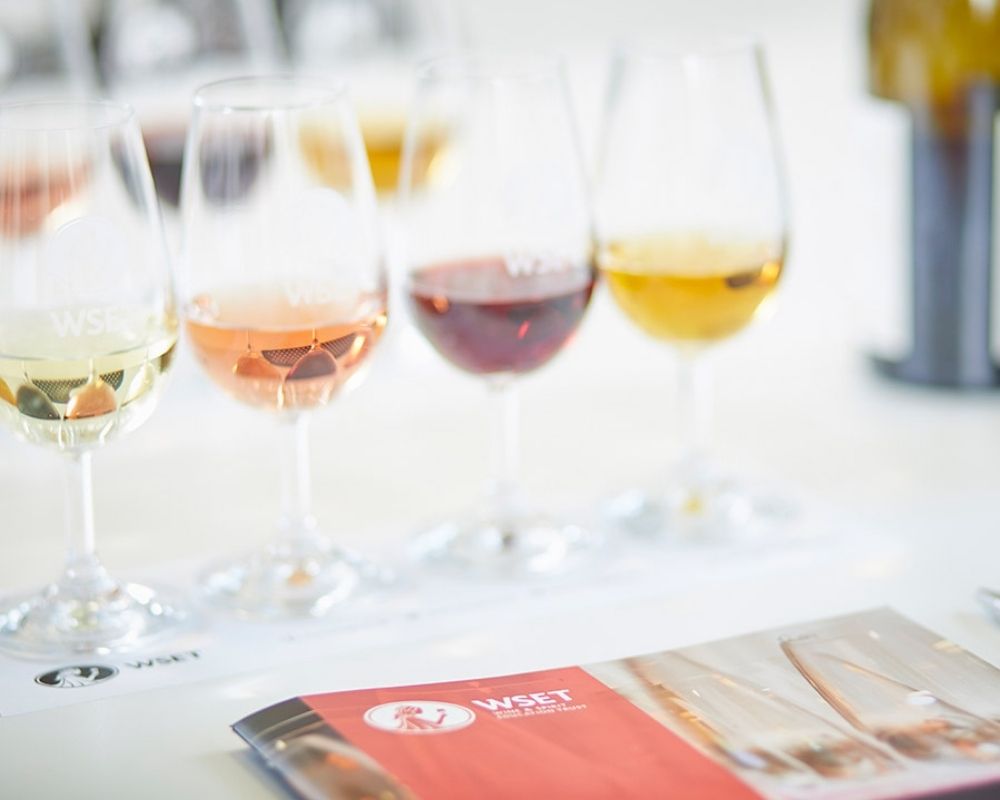
4. Tasting Prosecco: How to Appreciate Its Flavors?
Tasting Prosecco is a truly sensory experience.
While this sparkling wine is lighter and more accessible than some Champagnes, it deserves special attention to fully appreciate all its subtleties.
From the serving temperature to the choice of glass, every detail matters to savor the quality and aromas of Prosecco.
1. Serving Temperature: Essential to Reveal the Aromas
Unlike some wines, Prosecco should be served well-chilled to maximize its fruity character and lightness.
Serving it too warm could compromise its freshness, dulling its aromas.
Ideal Temperature: Serve Prosecco between 6°C and 8°C. This keeps the wine fresh while allowing its aromas to develop.
Pro Tip: Place the bottle in an ice bucket 20 to 30 minutes before serving to chill it without over-freezing it. Too cold, and the Prosecco will lose its character; too warm, and its acidity will dominate.
2. Choosing the Right Glass: A Difference in Style
The choice of glass has a significant impact on the Prosecco tasting experience. Using the right type of glass helps appreciate the bubbles and optimizes aroma exploration.
- Flute Glass: The classic flute is the most common glass used for Prosecco. Its narrow shape helps concentrate the aromas while preserving the bubbles longer.
- Tulip Glass: A tulip-shaped glass, being wider, allows for better concentration of the aromas and is particularly suitable for tasting higher-quality Prosecco.
Pro Tip: Avoid wide coupe glasses or oversized glasses, as they allow the bubbles to dissipate too quickly, spoiling the tasting experience.
3. Observation: A First Step to Appreciation
Tasting Prosecco starts with observing its color and clarity.
The color of Prosecco can vary slightly depending on the style, ranging from pale white to golden yellow.
- Clarity: A high-quality Prosecco should be perfectly clear, without visible impurities. The presence of particles may indicate poor filtration or low winemaking quality.
- Bubbles: Observe the finesse and persistence of the bubbles. Fine, constant bubbles indicate good fermentation quality, especially for Prosecco Superiore DOCG.
4. Olfaction: Smell to Appreciate More
Smell plays a crucial role in appreciating Prosecco. Around 80% of the flavors we perceive come from our nose, so it’s essential to take time to smell the wine before tasting.
- First Inhalation: Take a light first breath to catch the most volatile aromas, such as the floral and fruity notes of Prosecco.
- Second Inhalation: Swirl the Prosecco in the glass and inhale again. This second breath will reveal more complex aromas like green apple, citrus, or even white flowers.
Pro Tip: If you’re tasting Prosecco Superiore DOCG, the aromas will often be finer and more complex, requiring a more delicate inhalation. Don’t hesitate to download the WSET systematic tasting approach to guide your tastings!
5. Taste: Savor the Texture and Flavors
Once you’ve explored the aromas, it’s time to taste the Prosecco.
Unlike other wines, the goal of Prosecco tasting is to savor its light texture and freshness.
- Texture: A quality Prosecco should feel smooth and slightly creamy on the palate. The bubbles should be fine and well-integrated, giving a sensation of softness and elegance.
- Flavors: Prosecco typically presents fruity flavors (apple, pear, citrus) with a floral touch (acacia flower, jasmine). Higher-end Proseccos can also have mineral notes and a slight bitterness in the finish.
- Aftertaste: The aftertaste of Prosecco should be short and clean, neither too sweet nor too acidic. A long finish indicates a quality Prosecco.
Tasting Prosecco may seem simple, but it requires attention and technique to appreciate its finesse. By following these tasting tips, you will be able to fully appreciate the aromas, texture, and quality of each bottle of Prosecco.
If you want to learn more about the art of tasting spirits and wines, our WSET Wine courses are the perfect opportunity to refine your skills and become a true Prosecco expert.
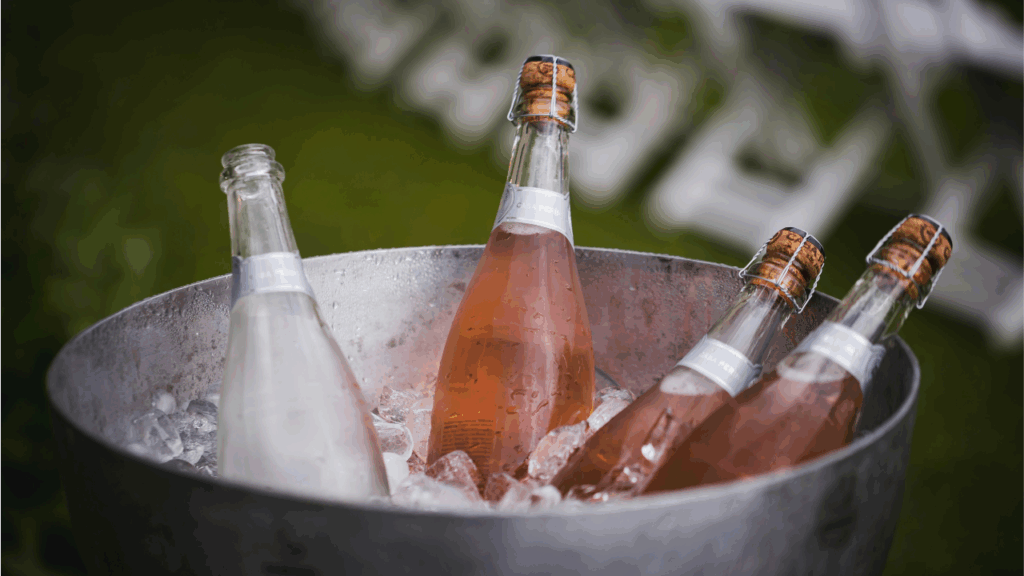
5. Food Pairings & Prosecco: Elevating Flavors with this Sparkling Wine
Prosecco is distinguished not only by its purity and fresh taste but also by its ability to pair beautifully with a wide range of dishes.
Its lightness and fine bubbles make it the perfect companion for many types of dishes, whether they are light, savory, or even sweet.
Here are some suggestions for pairing Prosecco with your meals and cocktails to elevate the flavors:
Prosecco pairs wonderfully with fresh, salty, or slightly sweet dishes. Its freshness and light acidity allow it to balance richer dishes or enhance the delicate aromas of certain foods.
Prosecco and Caviar: A Classic Elegance
One of the most classic and elegant pairings, Prosecco pairs wonderfully with caviar. The purity of the Prosecco highlights the salty, delicate flavors of the caviar, creating a refined tasting experience.
Prosecco and Seafood:
Salmon, oysters, shrimp, and other seafood go wonderfully with Prosecco. The fruity and citrusy aromas of the sparkling wine balance the briny flavors and fresh textures of seafood.
Prosecco and Fresh Cheeses:
Soft cheeses such as brie, camembert, or fresh goat cheese pair nicely with Prosecco. The sweetness and freshness of the wine provide a perfect balance to the creamy and mild flavors of fresh cheeses.
Prosecco and Asian Cuisine:
Prosecco also pairs well with Asian dishes such as sushi, raw fish, or spicy dishes (particularly Thai or Indian cuisine). The freshness of Prosecco contrasts with the bold, spicy flavors of these cuisines, making for a refreshing and harmonious pairing.

6. The Best Prosecco Cocktails: Create Sparkling and Festive Drinks
Prosecco is an excellent ingredient for creating refined and refreshing cocktails.
Its fruity taste and light texture pair beautifully with a wide range of ingredients, from fresh fruits and herbs to liqueurs.
Whether you’re organizing an aperitif, a party, or a brunch, here are some must-try Prosecco-based cocktails to add to your repertoire.
1. Aperol Spritz: The Iconic Prosecco Cocktail
The Aperol Spritz is probably the most popular and iconic Prosecco-based cocktail, especially during the summer months. This Italian cocktail is refreshing, slightly bitter, and perfectly balanced, making it an ideal choice for aperitifs.
Recipe:
- 50 ml Aperol
- 100 ml Prosecco
- 50 ml Soda
- Ice
- Orange slice for garnish
Prosecco brings a soft effervescence that harmonizes beautifully with the bitterness of Aperol and the freshness of orange. A simple yet elegant cocktail.
2. Bellini: The Fruity and Delicate Cocktail
The Bellini is a light and fruity cocktail, perfect for brunch or special occasions. It combines Prosecco and peach puree, offering a sweet and refreshing touch. This Prosecco-based classic can easily be personalized with different fruits.
Recipe:
- 100 ml Prosecco
- 30 ml Peach puree
- 1-2 drops of lemon juice (optional)
The Bellini is perfect for sunny days, with its delicate peach aromas perfectly paired with Prosecco’s lightness.
3. Mimosa: A Brunch Classic
The Mimosa is a classic cocktail, often served at brunch or celebrations. This mix of Prosecco and fresh orange juice is both simple and elegant, offering the perfect balance of sweetness and freshness.
Recipe:
- 50 ml Prosecco
- 50 ml Fresh orange juice
- Garnish: Orange slice or cherry
The Mimosa is light, fruity, and refreshing, perfect for starting a festive day or a morning cocktail.
4. Prosecco Cosmopolitan: The Sparkling Elegance
A modern twist on the classic Cosmopolitan cocktail, the Prosecco Cosmopolitan adds a sparkling touch to the fruit and citrus aromas while keeping its original fruitiness intact.
Recipe:
- 40 ml Vodka
- 15 ml Triple sec
- 15 ml Cranberry juice
- 10 ml Lemon juice
- 50 ml Prosecco
- Ice
- Garnish: Lemon slice or zest
The addition of Prosecco brings a sparkling and light note that perfectly balances the acidity of cranberry and lemon. This cocktail is perfect for chic evenings.
5. Moscow Mule with Prosecco: A Sparkling Twist on the Classic
The Moscow Mule is traditionally made with vodka, ginger beer, and lemon juice, but the addition of Prosecco gives this drink an even more refreshing and bubbly dimension.
Recipe:
- 50 ml Vodka
- 100 ml Ginger beer
- 10 ml Fresh lemon juice
- 50 ml Prosecco
- Ice
- Garnish: Fresh mint, lemon wedge
The ginger beer adds a slight spicy note that combines perfectly with the effervescence of Prosecco, creating a cocktail that is both smooth and spicy.
6. Lemon Drop Martini with Prosecco: A Sweet and Sour Cocktail
If you love sour cocktails with a touch of sweetness, the Lemon Drop Martini with Prosecco is for you. This cocktail combines vodka, lemon syrup, and Prosecco to create a wonderfully refreshing and citrusy drink.
Recipe:
- 50 ml Vodka
- 20 ml Lemon syrup
- 10 ml Sugar
- 50 ml Prosecco
- Ice
- Garnish: Lemon slice
This cocktail is an excellent choice for those who enjoy sweet and sour drinks, with the addition of Prosecco for a light and effervescent finish.

Everything You Need to Know About Prosecco and Mastering the Tasting
Prosecco is much more than just a sparkling wine.
It embodies lightness, freshness, and conviviality, while offering a range of styles and flavors that can enhance any occasion.
Whether you are an enthusiast fascinated by its different types, a foodie curious about food and wine pairings, or a cocktail lover, Prosecco has something to offer everyone.
However, to truly master the art of Prosecco tasting (and many other wines, spirits, sake, and beers!), it’s essential to deepen your knowledge.
At Weeno, we offer WSET Wine courses that will help you become a true expert in wines and other spirits, sake, and beers.
Why Choose WSET Training at Weeno?
- Expert Instructors: Our WSET-certified instructors are passionate professionals in the industry and provide you with a clear, interactive, and enriching teaching approach.
- Comprehensive and Immersive Training: From the history of wines to professional tasting, our courses will guide you through every step to refine your palate and develop recognized expertise.
- International Certification: Upon completing our sessions, you will receive a globally recognized WSET certification, opening up professional opportunities in the spirits industry.
- Flexibility: Our sessions are available online or in-person in Marseille, with courses suitable for all levels.
Whether you want to deepen your Prosecco knowledge or expand your skills in oenology, Weeno is here to support you.
Join our next WSET training session and discover the fascinating world of wines and tastings.
